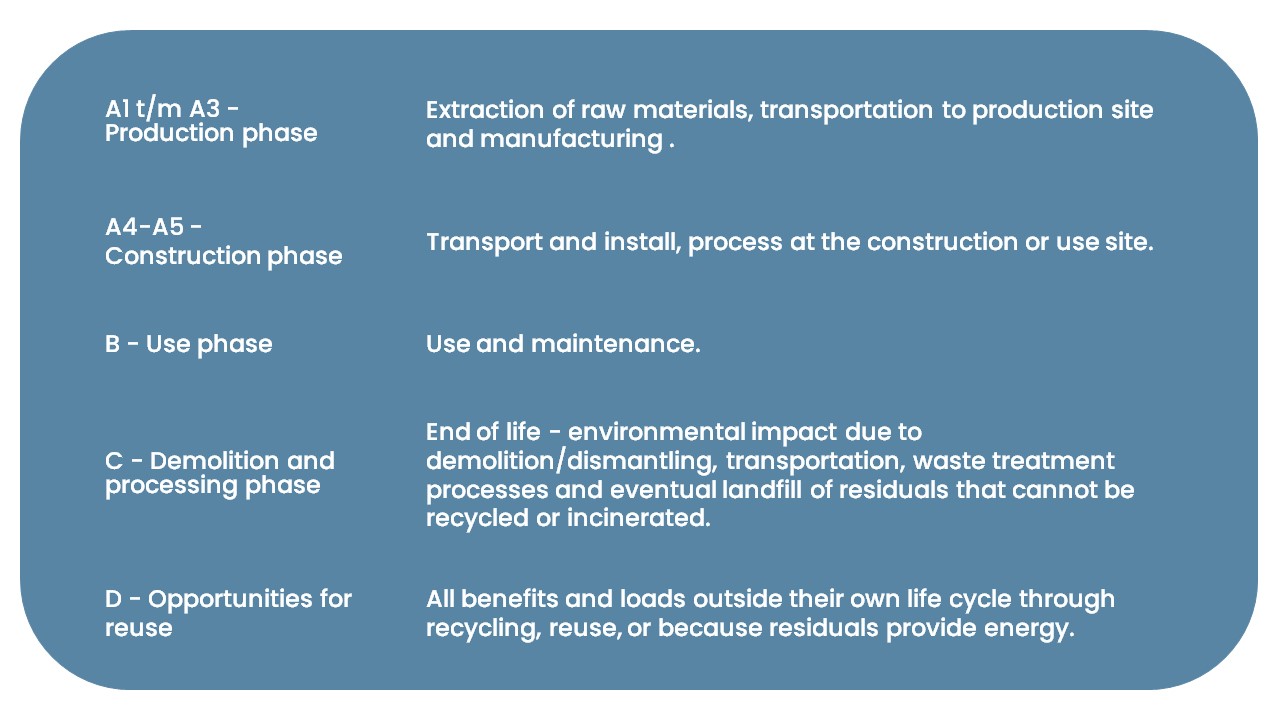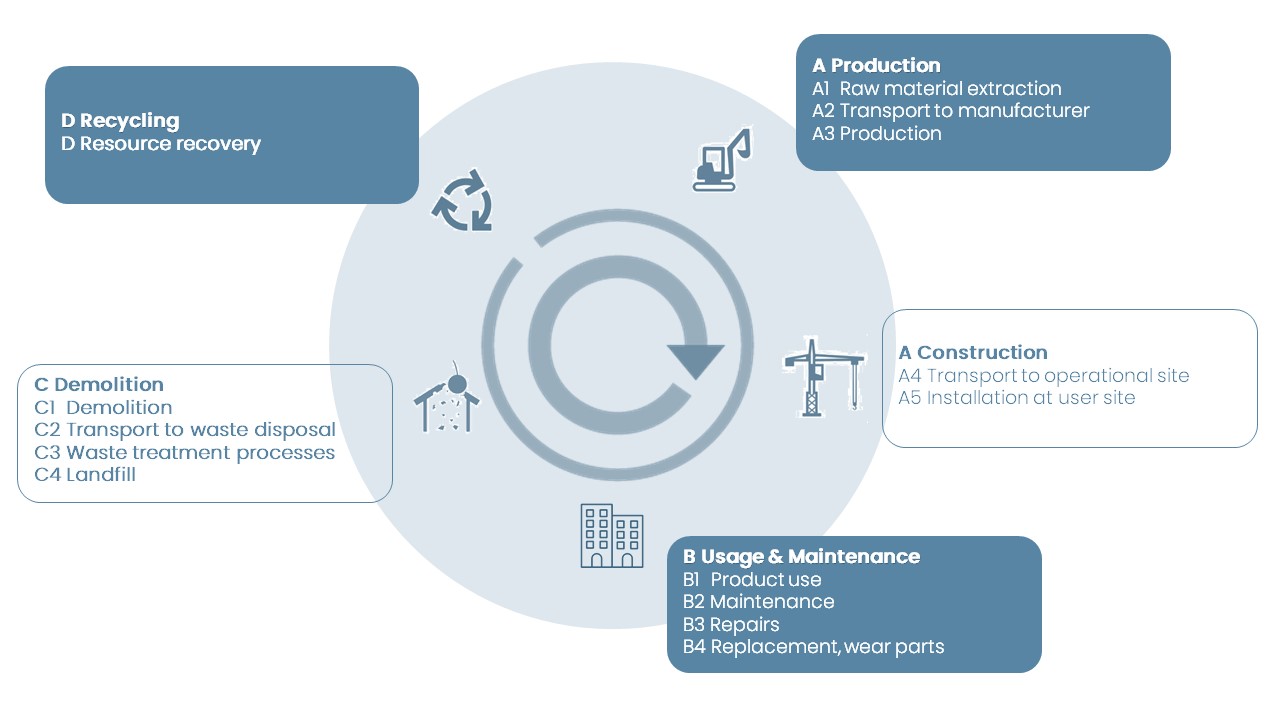LCA, a good analysis provides insight
A Life Cycle Assessment is a method of determining the environmental impact of a product throughout its life cycle, that is, from extraction of raw materials, production, transportation, use and disposal. This cycle is also referred to as Cradle to Grave.
There are numerous factors that are important when doing an LCA study that can make preparing an LCA confusing. This is why an LCA uses (international) guidelines and frameworks that measure the impact of a product.
For example, an LCA is conducted in accordance with so-called Product Category Rules (PCRs). These PCRs, which must be available for each product, define which impact categories should be investigated for different types of products and what the structure and content of the LCA report should be.
The applicable European standard EN 15804+A2 describes the LCA pathway.
The first step in drawing up an LCA is to determine the purpose and scope: what product is involved, what is the functional unit, what are the system boundaries, etc.
This is followed by the Life Cycle Inventory (LCI) where the chain and life cycle of the product are inventoried and the data collected and recorded. Then the environmental impact of the product is calculated. Finally, recommendations are made based on the findings.


Environmental Cost Indicator
In accordance with the Dutch supplement to EN 15804+A2 - the Dutch Guide to environmental performance calculations 'Practical aid to calculating the environmental performance of construction works' version 1.0 - the scores of the individual environmental effects are translated into a one-point score in Euros, the Environmental Cost Indicator (MKI).
The MKI is used to demonstrate the environmental impact of a product in a uniform and substantiated way.